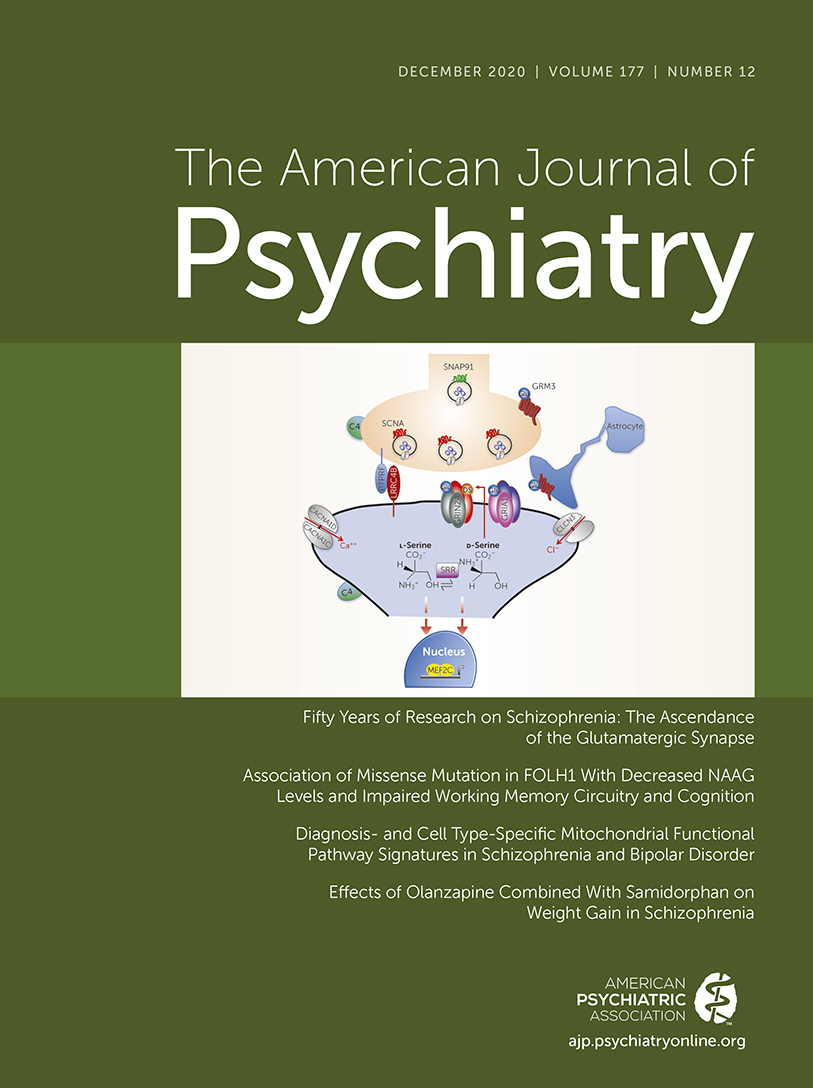Natural History, Not Lead Time
To the Editor: In the April 2020 issue of the Journal, Jonas et al. analyzed longitudinal data from a sample of individuals with schizophrenia who suffered delayed access (median duration of untreated psychosis [DUP], >300 days) to, and “intermittent and inconsistent” treatment after, a first admission for psychosis. Despite inadequate aftercare, shorter delays from psychosis onset to first admission predicted better outcomes 2 years, but unsurprisingly not 10 or 20 years, later (1). We were thus puzzled with the authors’ conclusion: “The association between DUP and psychosocial function may be an artifact of early detection, creating the illusion that early intervention is associated with improved outcomes.” We believe this incorrect inference reveals a conceptual confusion about lead-time bias and other sources of bias.
Lead time is usually conceptualized as the interval by which diagnosis is advanced to an earlier point in the natural history of a disease. Such early detection can occur via screening for asymptomatic disease, or proactive case identification of an already manifest illness (2). Lead-time bias is the spurious attribution of benefit to intervention offered early (during the lead time) relative to later (upon usual presentation to care). Textbook examples include the illusory benefit of increased 5-year survival among individuals whose asymptomatic tumors (e.g., lung, breast) were identified earlier by screening programs but who suffered similarly shortened life expectancies as those identified in routine care. For early intervention to meaningfully improve outcomes, the disease must be identifiable at a stage before it is usually recognized, and the ensuing intervention should be more effective when applied earlier in the illness course (2). This has been demonstrated for psychotic disorders: when DUP was successfully reduced and followed with a model of care closer to modern standards, outcomes up to 10 years later were measurably improved compared with samples not exposed to early detection (3). Such prospective and controlled tests of early detection can minimize lead-time bias as well as other important sources of systematic error, such as length-time bias (those who accept intervention may differ in illness duration and prognosis from those who do not) and compliance bias (those who accept intervention may differ prognostically from those who do not) (4).
Observational studies are methodologically more vulnerable to such biases, as they are unable to manipulate the key variable of treatment timing and must rely on data from patients who happen to present for care. Jonas et al. report on a self-selected or convenience sample not subjected to early detection (no lead time was gained, so no such bias can logically ensue) and instead more likely biased in the other ways outlined above. The results are better framed as approximating the natural history of schizophrenia in premodern systems of care, that is, the long-term outcomes of individuals who navigated to a first admission after unacceptably long and likely aversive pathways to care, with which they subsequently engaged only erratically (e.g., self-reported antipsychotic use 25% of the time). More than 2 decades ago, such observations motivated innovations in specialty team–based and youth-oriented care models that have survived experimental, and inferentially stronger, tests of demonstrated improvements in both access (5) and care quality (6). Modern early intervention services that wed these two elements of early detection with comprehensive care now offer the prospect of durable impact (7). Skepticism about such claims should motivate investigators to design studies that can manipulate the relevant variables of timing and treatment quality.
1 : Lead-time bias confounds association between duration of untreated psychosis and illness course in schizophrenia. Am J Psychiatry 2020; 177:327–334Link, Google Scholar
2 : Epidemiology, 2nd ed. Philadelphia, WB Saunders, 2000Google Scholar
3 : Early detection, early symptom progression and symptomatic remission after ten years in a first episode of psychosis study. Schizophr Res 2013; 143:337–343Crossref, Medline, Google Scholar
4 : Reducing the duration of untreated psychosis and its impact in the U.S.: the STEP-ED study. BMC Psychiatry 2014; 14:335Crossref, Medline, Google Scholar
5 : Effect of an early detection programme on duration of untreated psychosis: part of the Scandinavian TIPS study. Br J Psychiatry Suppl 2005; 48:s29–s32Crossref, Medline, Google Scholar
6 : Comparison of early intervention services vs treatment as usual for early-phase psychosis: a systematic review, meta-analysis, and meta-regression. JAMA Psychiatry 2018; 75:555–565Crossref, Medline, Google Scholar
7 : Working toward changing the duration of untreated psychosis (DUP). Schizophr Res 2018; 193:39–40Crossref, Medline, Google Scholar



